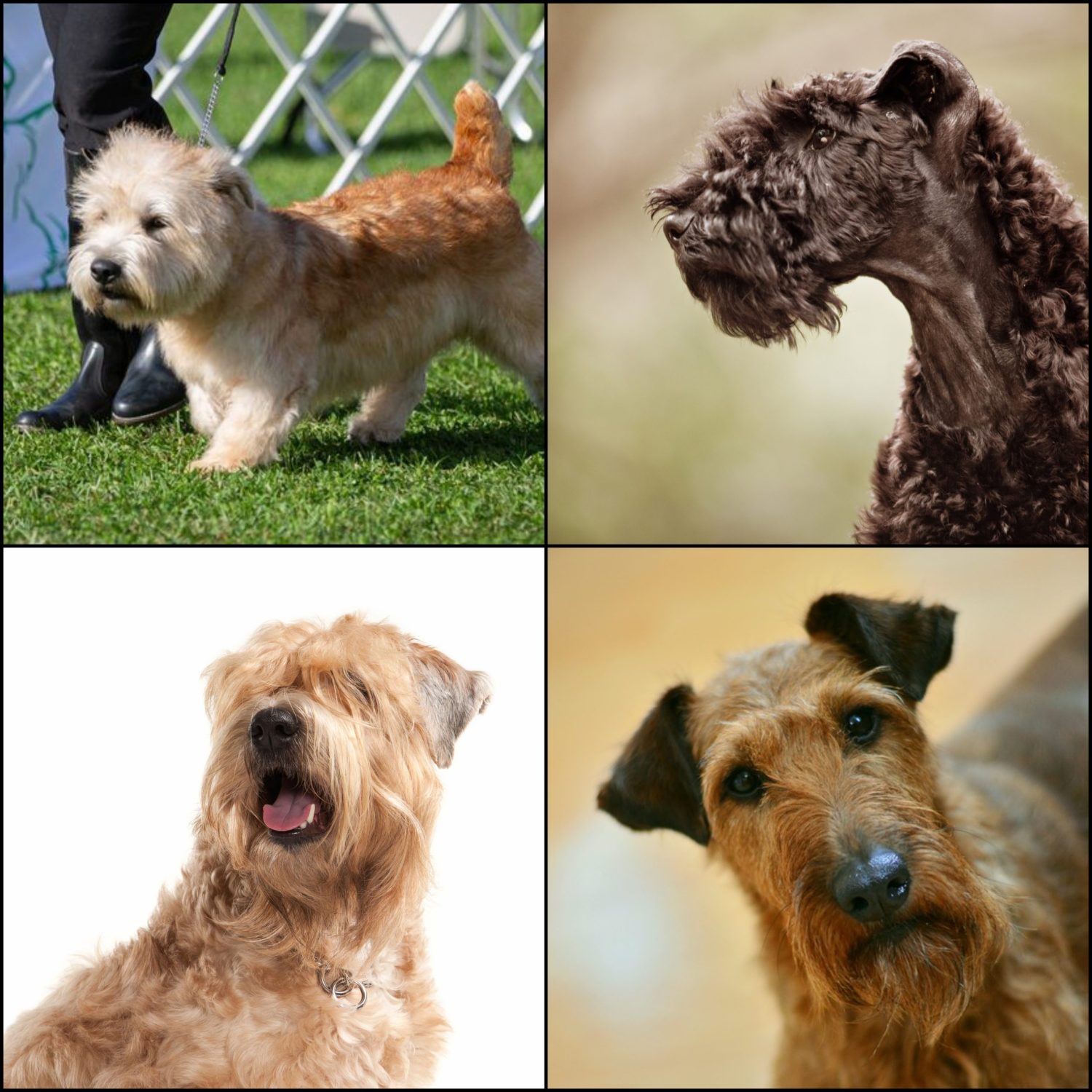
Although they are all terrier breeds of Ireland, one of the breeds in this collage (the Glen of Imaal Terrier, Irish Terrier, Kerry Blue Terrier, and Soft-Coated Wheaten Terrier) is not like the other in a way you can’t see. But first, a little background:
An Irish Terrier should show fire and animation, be spirited and full of game.
The Soft Coated Wheaten Terrier exhibits less aggressiveness than is sometimes encouraged in other terriers, but s/he is just stubborn enough to remind anyone that s/he’s a terrier.
As for the Kerry Blue Terrier imbued a touch of the blarney, s/he has typical terrier tenacity and won’t back down from a challenge.
These are all marvelous breeds in the right family, and a “terrier family” knows to expect a dog that is energetic and feisty, independent and stubborn, spirited and determined. Though the English writer, Jerome K. Jerome, once wrote that Fox Terriers are born with about four times as much original sin in them as other dogs, we have found that the quote fits most terriers.
We’ve not yet mentioned the Glen of Imaal Terrier, and here we run the risk here of overgeneralizing, but as compared to the other Irish terriers, the Glen is described as having a calmer, more laid-back disposition; the breed is less excitable, less apt to bark, and in general, has a more laid-back and undemanding temperament, unusual for a terrier. This is a description we came across a lot, including in Shane McCoy and Colin White’s book, “Native Irish Breeds.”
Mind you, a Glen becomes “all terrier” in the face of getting a job done. “Nuisance” animals such as badgers are not safe when a Glen is on the hunt, and historically, it was a Glen’s job to rid the farm of vermin. One such critter is a European badger which is a nasty tempered, dangerously fierce fighter. Taking on a 40 pound bundle of swiping claws and gnashing teeth is not for a sissy breed, but the Glen was – and is – up to the challenge.
Still, we come across the question of why the Glen’s temperament, when not a warrior hunter, is softer than the other Irish terriers; and while we’re at it, why does the Glen have a large head, large teeth and jaws?
Here we must tread carefully. In “Terriers of Scotland & Ireland,” author, Brian Cummings, PhD, speculates about the different breeds that went into the Glen’s development. He makes mention of the Soft Coated Wheaten Terrier, but also the Cairn Terrier, Bulldog, and even Staffordshire Bull Terrier which, the writer feels, would account for the distinct head and jaw development.
In looking for more answers, we fell down another rabbit hole, this one referring to DNA analysis that has actually shown that the Glen of Imaal Terrier is more closely related to mastiff-type dogs than to other terriers. Unfortunately, while we came across a few mentions of this DNA analysis, none of the sources provided specific citations for the research, and in the end, it felt like a “hit and run” one sometimes encounters while digging for information. The presence of a molosser-type dog in the Glen’s distant ancestry would explain the size of the head, teeth and jaws, as well as an inherited inclination to be a quiet and laid back dog compared to other Irish terriers, but without proof, it has to remain speculation. If any Glen of Imaal-owning readers know more, however, we’d love to hear from you.
Image: Our thanks to Kelli Whitfield for the Glen of Imaal Terrier photo. Kerry Blue Terrier photo by © Michelledekock and Soft Coated Wheaten Terrier photo by ©Dmitri Pravdjukov, both from Dreamstime stock photos. Irish Terrier from Pixabay.
